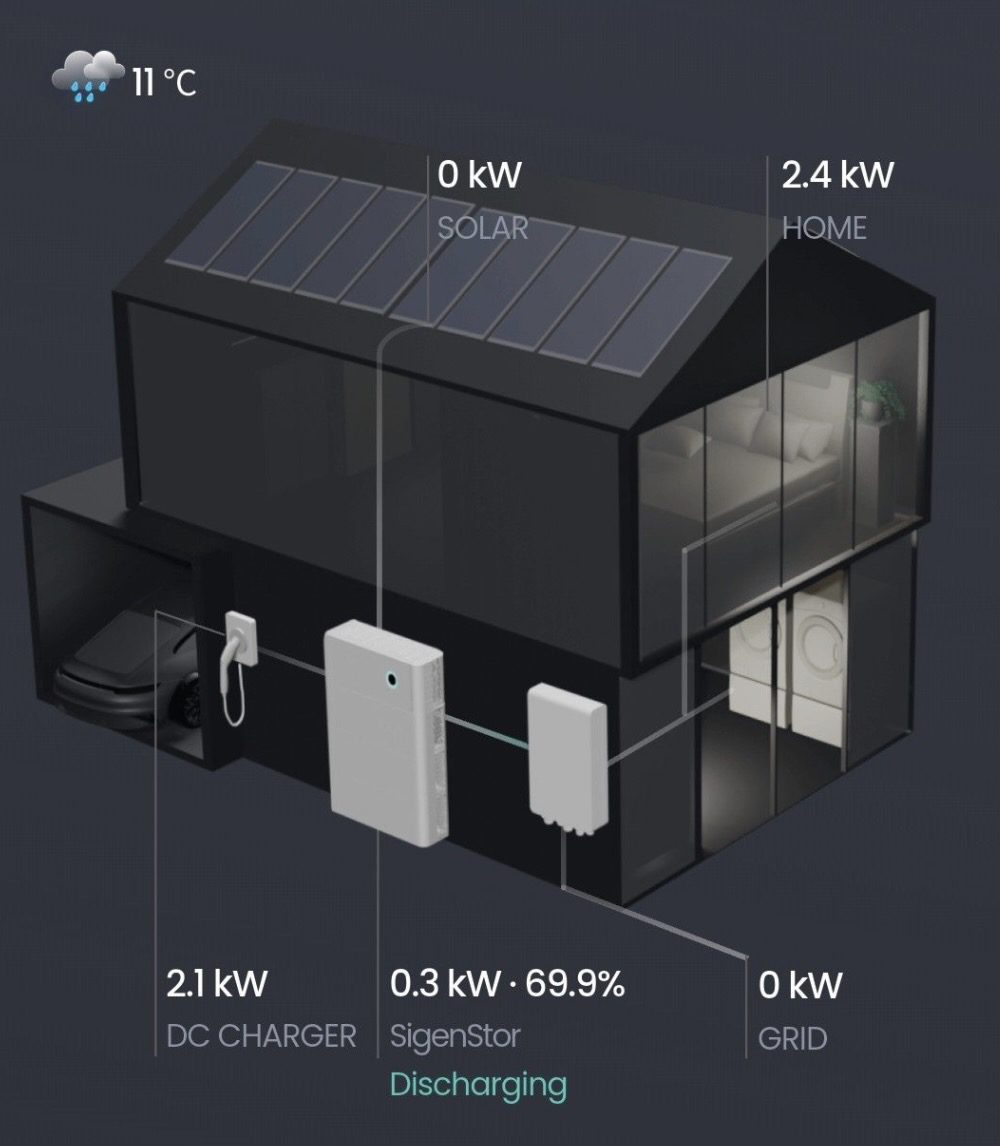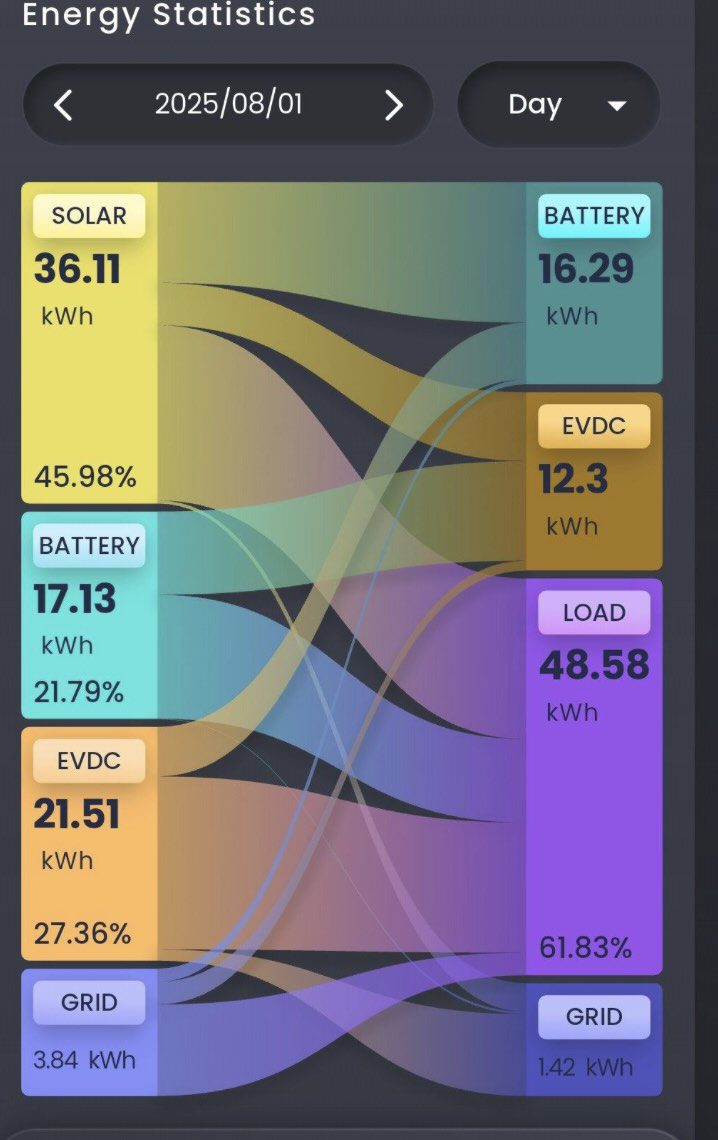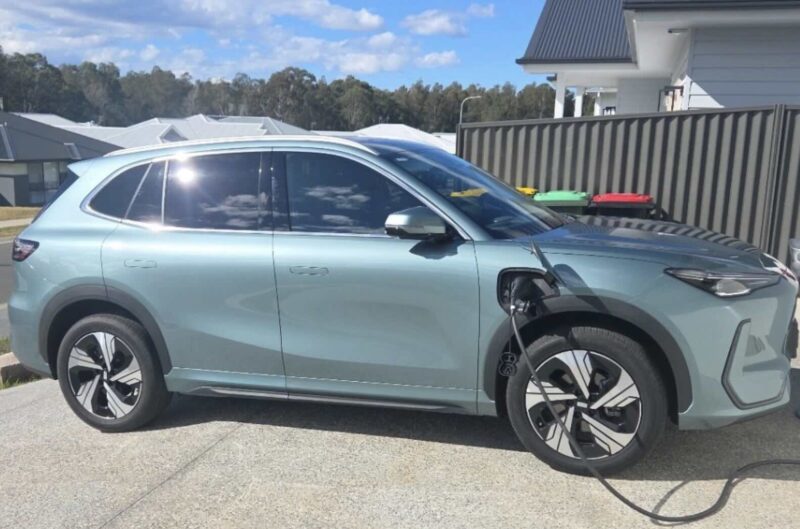An engineer with one of Australia’s biggest regional electricity networks has started using vehicle-go-grid (V2G) technology at his home, using his own Geely EX5 electric car, in what could be a landmark moment for the transition to consumer energy resources in this country.
Scott Purnell, an innovation technology specialist at Essential Energy, has revealed on his LinkedIn page that he has begun testing V2G – with a Sigenergy system – and the system is supporting his house, topping up his household battery and exporting power to the grid.
Purnell started with a trial on V2G only, and the next night he tested both the V2G and the Vehicle-to-Home (V2H) functionality.
“I configured the EV to stop discharging once the battery reached 60% and to limit the discharge rate to 3kW,” Purnell says. “The car dynamically followed the energy demands of the house, and when the battery hit the 60% threshold, it disconnected as expected. From that point, the home battery system seamlessly took over.”
Purnell says a high voltage event occurred on the grid during the test, but the Sigenergy system detected the anomaly and automatically disconnected the house from the network to protect the system.
“This unexpected event provided the perfect opportunity to validate the V2H setup in a real-world scenario. The EV and home battery worked together to maintain uninterrupted power, demonstrating the resilience and intelligence of integrated energy systems.”

The next night it got even more interesting.
“For the past 37 hours, my home has been running with minimal reliance on the grid – all thanks to V2G technology.
With overcast skies limiting solar generation, I’d normally need to draw energy from the grid to keep things running. But now, I’m able to tap into the stored energy in my EV to support my home’s energy needs.
“This setup is more than just a backup – it’s a glimpse into the future of energy resilience and smart home integration. V2G allows me to shift from being a passive consumer to an active participant in energy management.
“Still early days, but the potential is exciting.”
This graph below illustrates some of the flow of energy so far – with most coming from solar, and flowing into direct household use, the home battery, and the car, with the battery then supplying the load and the car, and the car in turn supplying the battery at different times, but mostly the load.
Interestingly, there was not much coming from, or going to, the grid.

What Purnell is doing is significant because Essential Energy has declared itself ready to host V2G charging across its networks, it’s just waiting for the various car manufacturers to give their thumbs up and make their cars available, and confirm the warranty on the car batteries.
Essential has hosted V2G using Nissan Leaf EVs and the old CHAdeMO protocol, and earlier this year did a successful trial with its first EV using the CCS protocol, a Ford Lightning electric ute.
Purnell is using his Geely, but only at discharge rates allowed through its existing V2H capabilities. Essential is hoping that car makers can move quickly to endorse the use of V2G in Australia.
Brad Tretheway, the head of innovation at Essential Energy, says that anyone who has a Sigenergy system in the Essential Energy network can access V2G right now with the software roll out.
But he says the main barrier remains vehicle warranties. “Still hammering away with other OEM’s (car manufacturers), but it is a hard slog,” he told The Driven.
A spokesperson for Essential Energy said V2G unlocks the potential for customers to get more value out of their renewable energy investments and is a critical step in facilitating the uptake of electric vehicles as well as assisting in the management of the power system.
“It is a huge step forward in the energy transition and Essential Energy is supportive of enabling network connections that help customers reap the rewards for their own transition,” the spokesperson said.
“Our employees are customers and are just as excited about new technology as we are. Some are trying out the technology at home, with their own systems and vehicles, as highlighted be the recent posts.”

Giles Parkinson is founder and editor of The Driven, and also edits and founded the Renew Economy and One Step Off The Grid web sites. He has been a journalist for nearly 40 years, is a former business and deputy editor of the Australian Financial Review, and owns a Tesla Model 3.


